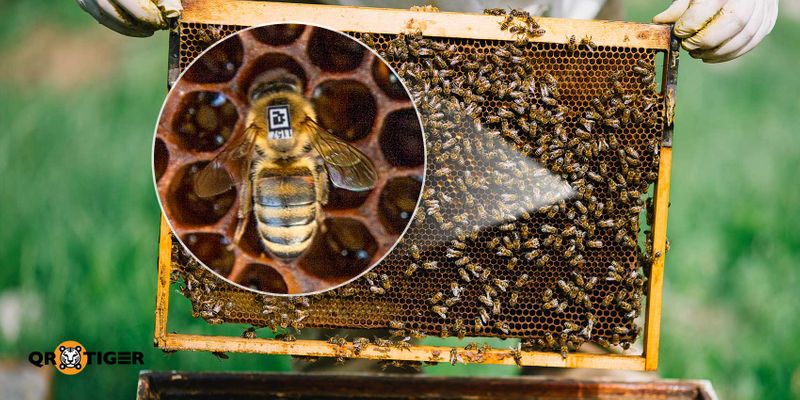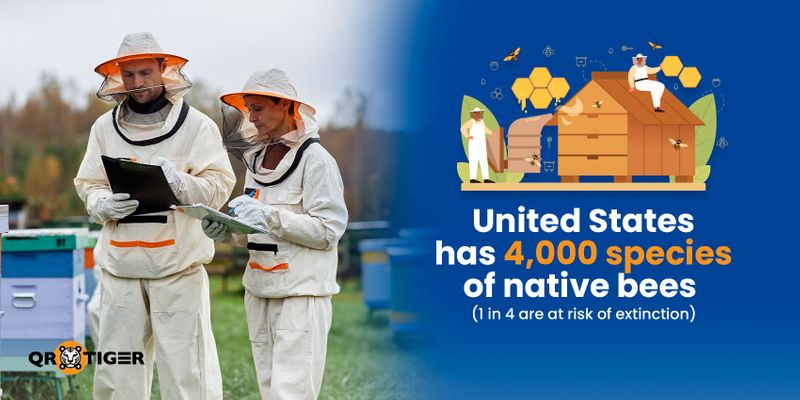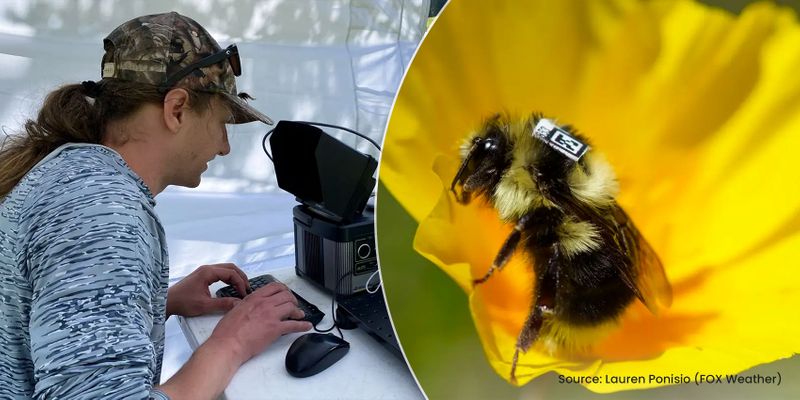QR Code Bee Tracking Helps Scientists Study Pollinators

In a study by the University of Oregon, scientists are assigning button-sized QR codes to hundreds of bees in an effort to better track their behavior and support pollinator conservation.
NORTHERN CALIFORNIA—Researchers are using tiny QR codes and AI-powered cameras to track the movements of hundreds of bumblebees swarming on a cannabis farm.
Tiny QR codes, each smaller than a pinky nail, are affixed to the bees’ backs. Using more than two dozen cameras positioned across the landscape, researchers are able to identify individual bees and monitor their movements and behavior throughout the season.
This monitoring system, which is powered by QR codes created using an advanced QR code generator and AI, addresses a long-standing challenge in pollinator conservation: how to monitor bees without disturbing them.
Table of Contents
The declining population of pollinators
The bee population globally is facing a drastic decline driven by habitat loss, pesticide exposure, parasitic pests, diseases, and climate change.
In a survey conducted in the United States from June 2024 to February 2025, commercial beekeepers reported an average loss of managed honey bee colonies of 62%, the highest on record.
The United States is home to some 4,000 species of native bees, but only a third have sufficient data to evaluate. Among those, 1 in 4 are at risk of extinction because of pesticides, habitat loss, diseases, and climate change.
Therefore, accurate bee monitoring is critical in the US. This QR code system helps fill major data gaps and guide restoration efforts.
As pollinators vital to crops like coffee, almonds, and blueberries, the health of bee communities is directly tied to global food security.
A kinder way to study bees

Tracking bee populations has been a paradox for conservationists because monitoring rare or endangered species often means killing them for identification.
Traditional methods like trapping and examining bees under a microscope are invasive and can further harm already declining populations.
According to Lauren Ponisio, a UO associate professor and the study's lead researcher, “It's a real pickle to track bees, especially endangered or rare species. But without good data, we can’t protect them.”
The researchers at the University of Oregon believe that this QR code and AI system may finally offer a way to protect pollinators without sacrificing them in the process.
“This isn’t just about tracking bees. It’s about giving researchers and communities the tools to better understand how pollinators live—and how we can help them thrive.”
-Timothy Warren, Researcher
Beeline-tracking through QR codes and AI

To track the bee movement, researchers carefully captured and cooled them in custom fanny packs and documented their physical traits.
Each bee then received a hand-cut QR code—printed on inkjet paper and glued gently to its back.
The tiny QR code used in the study offered a breakthrough in field monitoring. It allows the researchers to track individual bees noninvasively rather than relying solely on manual netting or lethal collection.
The codes allowed for repeated observation across the season, helping researchers map flight patterns, species distribution, and habitat preferences with greater accuracy.
According to Timothy Warren, one of the researchers working on the project, “QR codes give us a scalable, low-impact way to follow where bees go and what flowers they use.”
Even though outfitting bees with QR codes opened new possibilities for nonlethal tracking, researchers quickly learned that technology alone wasn’t enough. The real challenge for them was to get the bees to engage with it.
The camera network, designed to scan QR tags as bees flew past, initially struggled to capture usable data. To improve the experiment, the researchers are planning to use better baits to lure them in.
Alongside the lure redesign, researchers plan to upgrade the system for real-time tracking, energy efficiency, better data storage, and offline functionality.
Several organizations have previously turned to animal tracking QR codes to help monitor and protect wildlife.
Fahlo, a brand committed to raising awareness and funds for conservation, also introduced the Fahlo QR code to let users follow the real-time movements of their adopted animals as part of its wildlife protection program.
Track without harm; protect what’s already rare
Despite the setbacks faced, QR codes have already made individual bee tracking possible without harm.
Ponisio and her collaborators are preparing to scale up the QR code for tracking by expanding to 200 camera units across California over the next three years.
Once refined, the team is planning to deploy the system at other regions such as the fire-impacted landscapes like the McKenzie River Valley. They are also planning to broaden the system’s capabilities to identify a wider range of bee species.
To enhance the accessibility of their system, Warren also plans to publish an open-source guide that enables scientists, land managers, and even farmers to build and customize their own bee camera networks.
Thanks to QR codes for paving the way to a harmless means of study.


